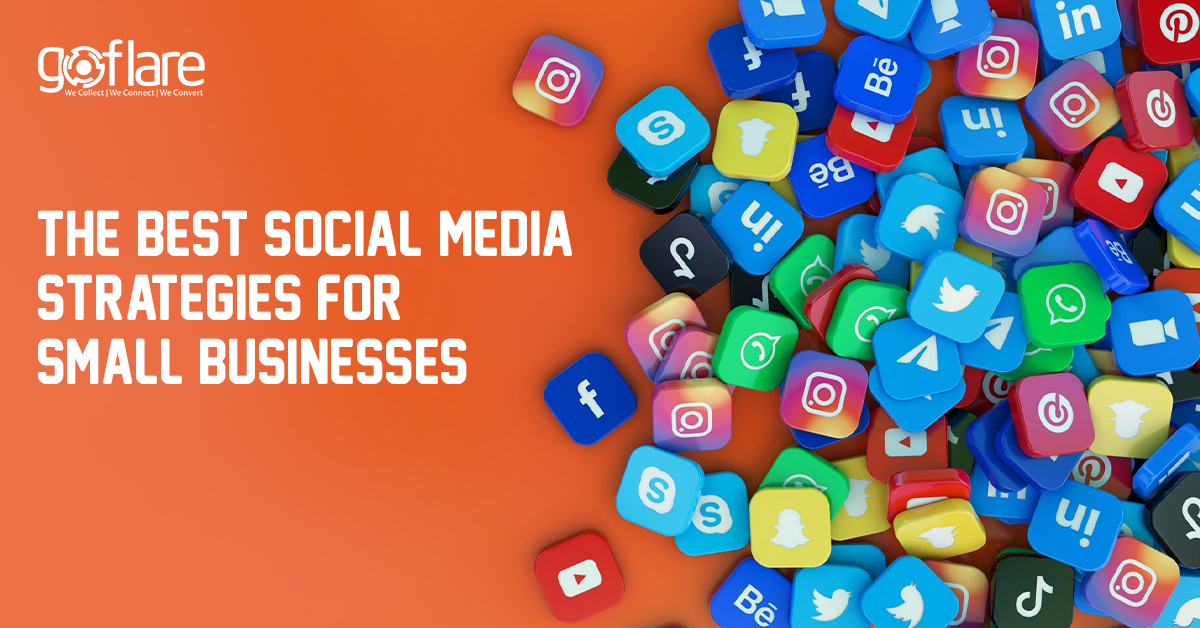
Introduction
Social media is no longer just an option for small businesses—it’s a necessity. With over 4.9 billion social media users worldwide, platforms like Facebook, Instagram, LinkedIn, and TikTok offer businesses an opportunity to engage with their audience, build brand awareness, and drive sales without breaking their banks. Most Marketing strategies require a huge marketing budget that can be a problem for startups or small businesses. Social media marketing is a rather budget-friendly yet an effective way to deliver a strong brand presence.
But with numerous platforms and strategies, how can small businesses make the most of social media? In this guide, we’ll walk you through the best social media strategies that can help your business grow.
1. Define Your Social Media Goals
Before allocating any budget or creating strategies, you should be clearly aware of what you want to gain from it. Clear goals will help streamline your content strategy and performance metrics. Some common goals include:
Increasing brand awareness – Reaching a wider audience and getting your name out there.
Generating leads and sales – Driving traffic to your website or store.
Building community and engagement – Encouraging interactions with your followers.
Providing customer support – Using social media as a direct communication channel for both positive and negative reviews.
Pro Tip: Use the SMART goal framework (Specific, Measurable, Achievable, Relevant, Time-bound) to track success. This will help gain a strong insight into the past, present and the desired future.
2. Choose the Right Social Media Platforms
With hundreds of social media platforms on the rise, it gets rather confusing to choose the right one for your business.Not every platform will serve your business. Choose social media channels based on your target audience and industry. Popular social media platforms include:
Facebook – Best for local businesses, service providers, and community engagement. Instagram – Ideal for visual brands, eCommerce stores, and influencers.
LinkedIn – Great for B2B marketing, networking, and professional services.
TikTok – Best for brands targeting younger audiences with creative content.
Twitter (X) – Good for real-time updates, customer service, and industry trends.
Pro Tip: Start with 2-3 platforms and focus on consistent posting and engagement before expanding.
3. Create High-Quality, Engaging Content
Content is the heart and soul of your social media marketing strategy. In order to gain attention and engagement from your audience, focus on creating content that hits the audience one way or another. Creating content around polls, questionnaires and more of “audience-oriented” content is what helps you stand out. Highlighting your Unique Selling Point is what creates a ground-breaking presence for your brand.
Educational Content – How-to guides, tips, and industry insights.
Behind-the-Scenes (BTS) – Showcase your team, process, and company culture.
User-Generated Content (UGC) – Feature content created by your customers.
Live Videos & Reels – Engage audiences in real-time with live Q&A sessions.
Storytelling & Brand Stories – Share success stories and testimonials.
Pro Tip: Use the 80/20 rule – 80% valuable, engaging content and 20% promotional content.
4. Be Consistent with Your Posting Schedule
Posting consistently keeps your audience engaged and improves your reach. Create a content calendar to stay organized. Schedule your posts, reels and divide your content based on categories and types. Manage the time and categorise posts based on priority.
Best Posting Frequency by Platform:
✔ Facebook: 3-5 times per week
✔ Instagram: 4-7 times per week (Reels, Stories, Posts)
✔ LinkedIn: 2-3 times per week
✔ TikTok: 4-5 times per week
✔ Twitter (X): 5-7 times per week
Pro Tip: Use social media scheduling tools like Buffer, Hootsuite, or Later to automate posting. Also assigning a team solely to posting and scheduling and coming up with new ideas for content can help elevate the quality of the content to another level.
5. Engage with Your Audience & Build Community
Social media is a two-way conversation. Respond to comments, messages, and reviews to increase engagement.
✔ Reply to every comment & direct message or query.
✔ Run polls, Q&A sessions, and giveaways to increase further participation.
✔ Join industry-related conversations & trending hashtags as people are attracted to it.
✔ Collaborate with micro-influencers or brand ambassadors.
Pro Tip: Engaging within the first hour of posting can boost visibility and reach. Letting the audience know that you are there for them and are active for their queries and questions.
6. Use Paid Ads to Boost Reach & Conversions
While organic reach is essential, paid social media ads can significantly increase visibility and sales.
Best Ad Types for Small Businesses:
✔ Facebook & Instagram Ads – Great for lead generation & eCommerce sales.
✔ LinkedIn Ads – Perfect for B2B businesses targeting professionals.
✔ TikTok Ads – Ideal for brands targeting Gen Z & younger audiences.
✔ Retargeting Ads – Re-engage website visitors who didn’t convert.
Pro Tip: Start with a small budget ($5-$10 per day) and test different creatives before scaling.
7. Track Performance & Optimize Your Strategy
Use analytics tools to measure what’s working and optimize accordingly.
Key Metrics to Track:
Engagement Rate – Likes, shares, and comments.
Follower Growth – How fast your audience is expanding.
Click-Through Rate (CTR) – The percentage of users clicking your links.
Conversions & Leads – Sales and inquiries generated from social media.
Pro Tip: Use Facebook Insights, Instagram Analytics, and Google Analytics to track results and adjust strategies.
8. Leverage Influencer & Partnership Marketing
Partnering with local influencers or industry leaders can expand your reach and credibility. Individuals are fond of products that they can connect with real people. It is always better to make the most of influencer marketing.
✔ Micro-influencers (1K-50K followers) have higher engagement than celebrity influencers.
✔ Affiliate marketing – Offer commissions for referrals.
✔ Cross-promotions with other small businesses.
Pro Tip: Reach out to influencers with authentic engagement, not just high follower counts.
9. Invest in Video & Short-Form Content
Short-form videos like Instagram Reels, TikTok, and YouTube Shorts are dominating social media. Individuals are more and more interested in content that is short and gets the message delivered.
Video Content Ideas for Small Businesses:
Product showcases & tutorials
Behind-the-scenes & workplace culture
Customer testimonials & reviews
“Day in the Life” business operations
Pro Tip: Short-form videos get 3x more engagement than static posts—use them to boost your reach.
10. Stay Updated with Trends & Algorithm Changes
Social media platforms constantly update their algorithms. Stay ahead by following industry blogs, attending webinars, and testing new features.
Platforms to Follow for Social Media Updates:
✔ Facebook & Instagram Business Blog
✔ LinkedIn Marketing Solutions Blog
✔ TikTok Creator Portal
✔ HubSpot & Social Media Examiner
Pro Tip: Early adopters of new platform features (e.g., Instagram Reels, LinkedIn Newsletters) get better reach!
Final Thoughts
Social media marketing is a powerful, cost-effective tool for small businesses to build a loyal audience, increase brand awareness, and drive sales. By using the right strategies like consistent posting, audience engagement, paid ads, and video content,your business can stand out in a crowded digital space. Always streamline your content as per the needs of your audience.
Want to build a groundbreaking social media presence? Contact Goflare DIgital Marketing Agency for expert social media management & ad campaigns!
Book a Free Social Media Strategy Session Today.





